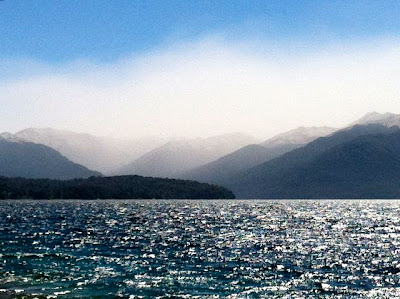As
my recent post reported, Bariloche is now advertising that, as the skies
clear and the airport reopens, authorities are optimistic about the upcoming
ski season. Of course, it’s only been a
few years (2008) since the more southerly Volcán Chaitén forced the occupation
of its namesake Chilean village but also dramatically impacted the
Argentine side of the border. Local opposition to a government decision to
relocate the village to the safer site of Santa Bárbara forced reluctant authorities
to restore essential services, including electricity and water, despite Chaitén’s
precarious location at the base of a subsiding but still burbling caldera.
Volcán Chaitén was the answer to the quiz I posed to award
two copies of Moon Patagonia to aspiring travelers, and I finally have my
winners. The first was Steve Behaegel of Merelbeke, Belgium, a Patagonia addict
who has been there several times before and is planning, in the next austral
summer, to go pack-rafting in the wilds of Lago O’Higgins, at the terminus
of the Carretera Austral. The other goes to Oliver King of London, who
intends to visit soon with his wife and young daughter.
Oliver also identified Volcán Hudson as the Chilean
volcano that erupted in 1991, burying large parts of southern Argentine Patagonia
in ash, killing thousands of sheep and destroying the soft fruit and orchard
production of Chile
Chico and Los
Antiguos (which has since recovered). In fact, Oliver told me, he was there
at the time, and again in 2003.
In the course of doing my first guidebook for a publisher
whose name is best left unmentioned, I myself visited the area around Los
Antiguos and Chile Chico just a few months before Hudson’s eruption. Even a
couple years later, driving the Carretera Austral, I saw ash more than a meter
deep on each side of the road, and the remnants of the eruption are still
visible in the so-called Bosque Inundado (“sunken forest,” pictured above) along
the Río Ibáñez.
For those interested in this part of Patagonia, there’s good
news that the Chilean energy giant Colbun
has decided to refrain from pushing the massive HidroAysén dam project on
the region’s endangered Baker and Pascua rivers (pictured above), at least for the time being.
I’ll have something about this intriguing development in the near future.




No comments:
Post a Comment